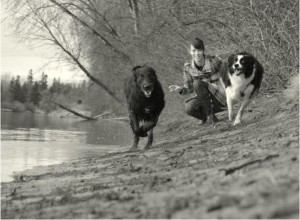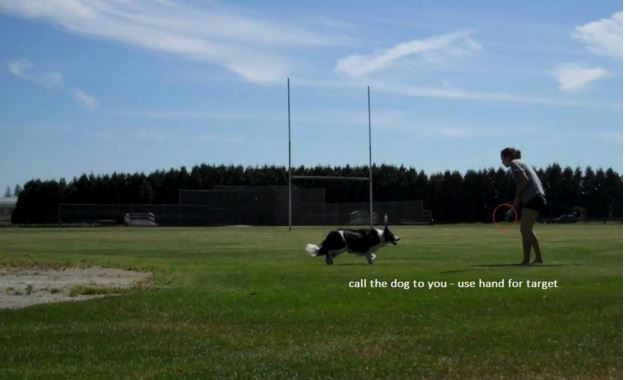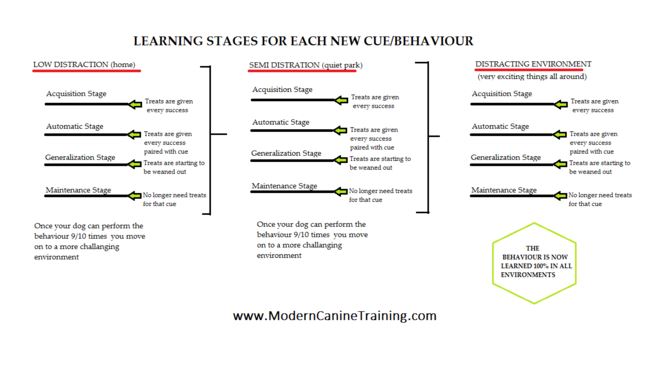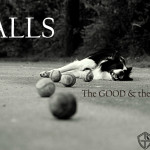RECALLS – Coming When Called
RECALLS – Coming When Called

The majority of “complaints” I get from dog owners is regarding “come when called”, also known as recall. The dog won’t come period, or the dog only comes when he wants to or feels like it, or my dog only comes when there are no other dogs around, and the list goes on and on.
There are 2 reasons why dogs don’t come when called:
- Too distracting – this can mean the dog is too distracted by the stimuli in his or her environment.
- It’s not worth it – why should your dog come when called? And ‘because’ is not a reason.
When you have a herding breed, you know how fast their minds can work - they’re ten steps ahead of you ALL THE TIME, so distractions for a herder are that much more difficult. Most of the time, it’s the “too distracted” problem over the “not worth it”. Stimuli is like firecrackers for a herder; it stimulates their mind and makes them think, then they become mindless zombies after that ‘spark’.
Every situation, home and environment is vastly different for each dog, so you will need to take into account the lifestyle you give your dog and see if you can move things around to make training a recall easier. Example: taking the extra time each night to practice with the family, or taking the small car ride to the quiet park to practice in a new environment.
WHAT NOT TO DO
Do NOT call your dog and then do something bad ‘in their eyes’
(Bath, take away from the park, put in crate if they don’t like it, etc.)
Really what you’re doing is giving them the heads up that, “I’m going to do something pretty sucky, want to stick around?” I’m pretty sure most dogs high tail it (no pun intended) to go do something more fun, like play the chase game or avoid you completely.
Tip: don’t tell them you’re going to do something bad if you need to, just bring them where you need them, but don’t give them the heads up. This makes it easier for both parties and much less stressful on the dog.
Do NOT take your dog into an environment that he or she isn’t ready for (too distracting). You’re setting them up to fail, and fail they will.
This happens far too often; taking a dog into an environment where there is so much going on that (in the dog’s eyes) is awesome that they take off (having a blast) and they have no need for you again. By taking them to these places (dog parks and other busy, fun areas), you teach your dog that the environment is more fun than you.
Owners mean well when they take their dogs to these places, but they are really making it harder on themselves in the long run because they are inadvertently teaching their dog not to listen to them.
WHAT TO DO
Before even attempting to get out there and teach a recall cue, you need to cover all the bases with your dog; which I go over in my video ‘4 MUSTS Of Dog Training’. The four basic needs a dog has in order for training to succeed are:
- Social Interaction
- Exercise
- Mental Stimulation
- Exposure and Socialization
The detailed information that I go over in the video will help you better understand how to make training work for your dog.
Once we can say, “yes, my dog gets all four of those needs met”, then we move on to training the cue in a low-distraction environment (such as your home) for one week.
TRAINING A CUE
Simple rules for training a recall that are fool-proof:
- Make something amazing happen every time your dog comes to you.
This is not a pat on the head or praising; it has to be play, food or a game.
- Make it motivating to choose you over the distraction.
Don’t just stand there being boring - motivate your dog that you’re having a party over here and he or she is missing out!
- Use their own reward system as the reinforcement!
Once they get to you, send them back to what they were doing as a reward!
TRAINING THE RECALL
Recalls involve about 20% training and 80% management. Most people don’t like to manage, so they often fail with the recall. But, if you can manage your dog well in each environment and not let them off-leash, if they cannot be trusted to come back, you won’t struggle with this behaviour. Put a long line on your dog so they have freedom to run, but if they go charging after something when you say “come”, you can prevent them from self-reinforcement by holding that leash and not letting them reach what they want without coming to you first.
EXERCISES TO PLAY
Recall Game
This is a game where you have more than one person in the household, everyone finds a spot within the room or all over the house (if you think your dog is good enough) and you each take a turn calling the dog.
This game allows time to condition the cue (put meaning to it) and create positive associations with the cue you have picked.
Round Recall
- Have your dog by your side
- Stand on a surface where your treat will stand out from the background (white treat, dark floors)
- Throw the treat ahead of you and tell your dog to get it
- Once the dog picks the treat up, call the dog “come” and offer your empty hand in a fist


- Once the dog comes to investigate your hand (thinking there is a treat in it), say “good dog!” and turn around, throw the treat the opposite way and tell your dog to get it.
- Repeat over and over
The beauty about this game is it’s great for single owners or owners who spend the majority of time with the dog and need to train them by themselves.
SETTING YOUR DOG UP FOR SUCCESS
This is very important to understand - once your dog has the “cue/behaviour”, you must know how to best set them up for success. You can’t run before you can crawl, just as dogs can’t perform the cue in the most distracting environments without practicing in less distracting environments first.
See below on my outline for learning stages of the recall and any other cue you teach your dog, and the stages that go with it for optimum success.

And for a detailed explanation, watch my video on “Setting Your Dog Up to Succeed”.
Good luck!
Article By:
By Kris Crestejo, CDBC
Meet Our Evangelist







